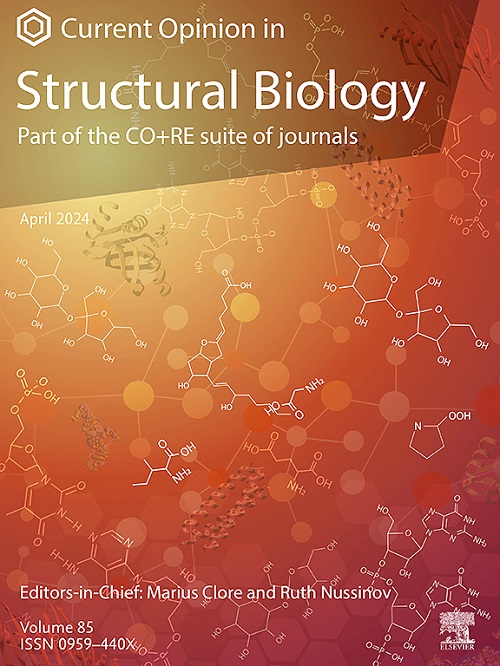调节酶活性的方法:实验和计算的最新进展
IF 6.1
2区 生物学
Q1 BIOCHEMISTRY & MOLECULAR BIOLOGY
引用次数: 0
摘要
近年来,在调节酶活性的策略方面取得了重大进展。新的高通量酶动力学分析和高效的计算方法使人们能够更深入地了解决定酶活性的分子机制,这为酶催化的合理调节提供了指导。高效筛选、定向进化技术和机器学习驱动的蛋白质工程工具的持续发展,使得无需了解催化调节的详细机制就可以调整酶的活性。通过结合这两种限制方法,酶调节的效率可以大大提高,因为在“暴力”工程方法接管之前,对机制的理解可以帮助减少设计空间的大小。我们简要地讨论了实验和计算的相关进展,并对未来的发展进行了评论,以进一步提高对机械的理解和工程能力,以实现广泛的应用。本文章由计算机程序翻译,如有差异,请以英文原文为准。
Approaches for regulating enzyme activities: Recent advances in experiment and computation
Major progress has been made in recent years in terms of strategies for regulating enzyme activities. Novel high-throughput enzyme kinetic assays and efficient computational methodologies enabled a deeper understanding of molecular mechanisms that dictate the activity of enzymes, which provide guidance to rational modulation of enzyme catalysis. Continued development of efficient screening, directed evolution technologies, and machine learning–driven protein engineering tools make it possible to tune enzyme activities without having to understand the detailed mechanism of catalysis regulation. By combining these two limiting approaches, the efficiency of enzyme regulation can be substantially improved as a mechanistic understanding can help reduce the size of design space before the ‘brute-force’ engineering approach takes over. We briefly discuss relevant advances in both experiment and computation and comment on future developments that can further enhance mechanistic understanding and engineering capability for broad applications.
求助全文
通过发布文献求助,成功后即可免费获取论文全文。
去求助
来源期刊

Current opinion in structural biology
生物-生化与分子生物学
CiteScore
12.20
自引率
2.90%
发文量
179
审稿时长
6-12 weeks
期刊介绍:
Current Opinion in Structural Biology (COSB) aims to stimulate scientifically grounded, interdisciplinary, multi-scale debate and exchange of ideas. It contains polished, concise and timely reviews and opinions, with particular emphasis on those articles published in the past two years. In addition to describing recent trends, the authors are encouraged to give their subjective opinion of the topics discussed.
In COSB, we help the reader by providing in a systematic manner:
1. The views of experts on current advances in their field in a clear and readable form.
2. Evaluations of the most interesting papers, annotated by experts, from the great wealth of original publications.
[...]
The subject of Structural Biology is divided into twelve themed sections, each of which is reviewed once a year. Each issue contains two sections, and the amount of space devoted to each section is related to its importance.
-Folding and Binding-
Nucleic acids and their protein complexes-
Macromolecular Machines-
Theory and Simulation-
Sequences and Topology-
New constructs and expression of proteins-
Membranes-
Engineering and Design-
Carbohydrate-protein interactions and glycosylation-
Biophysical and molecular biological methods-
Multi-protein assemblies in signalling-
Catalysis and Regulation
 求助内容:
求助内容: 应助结果提醒方式:
应助结果提醒方式:


